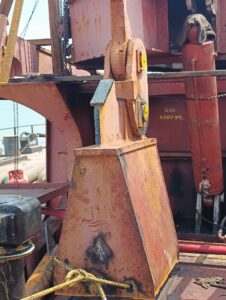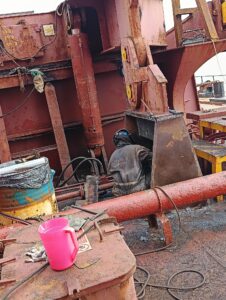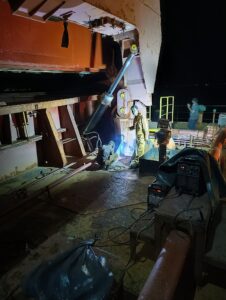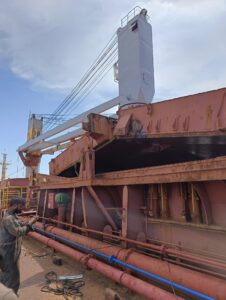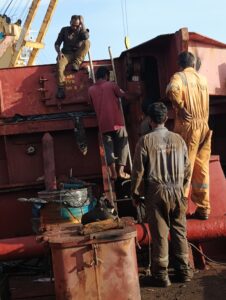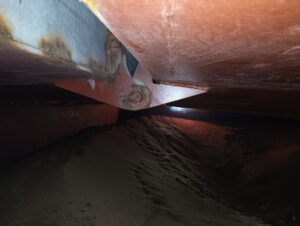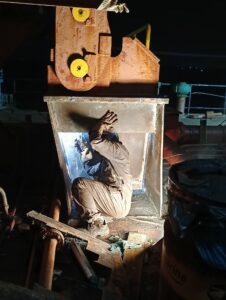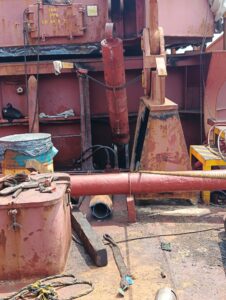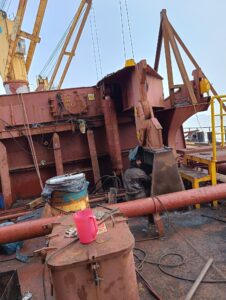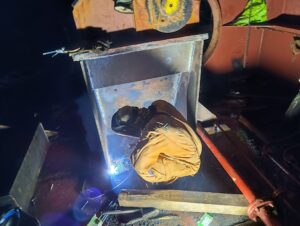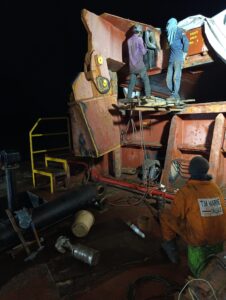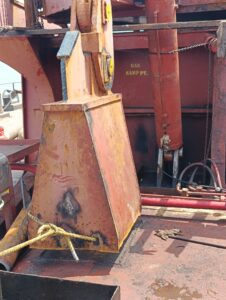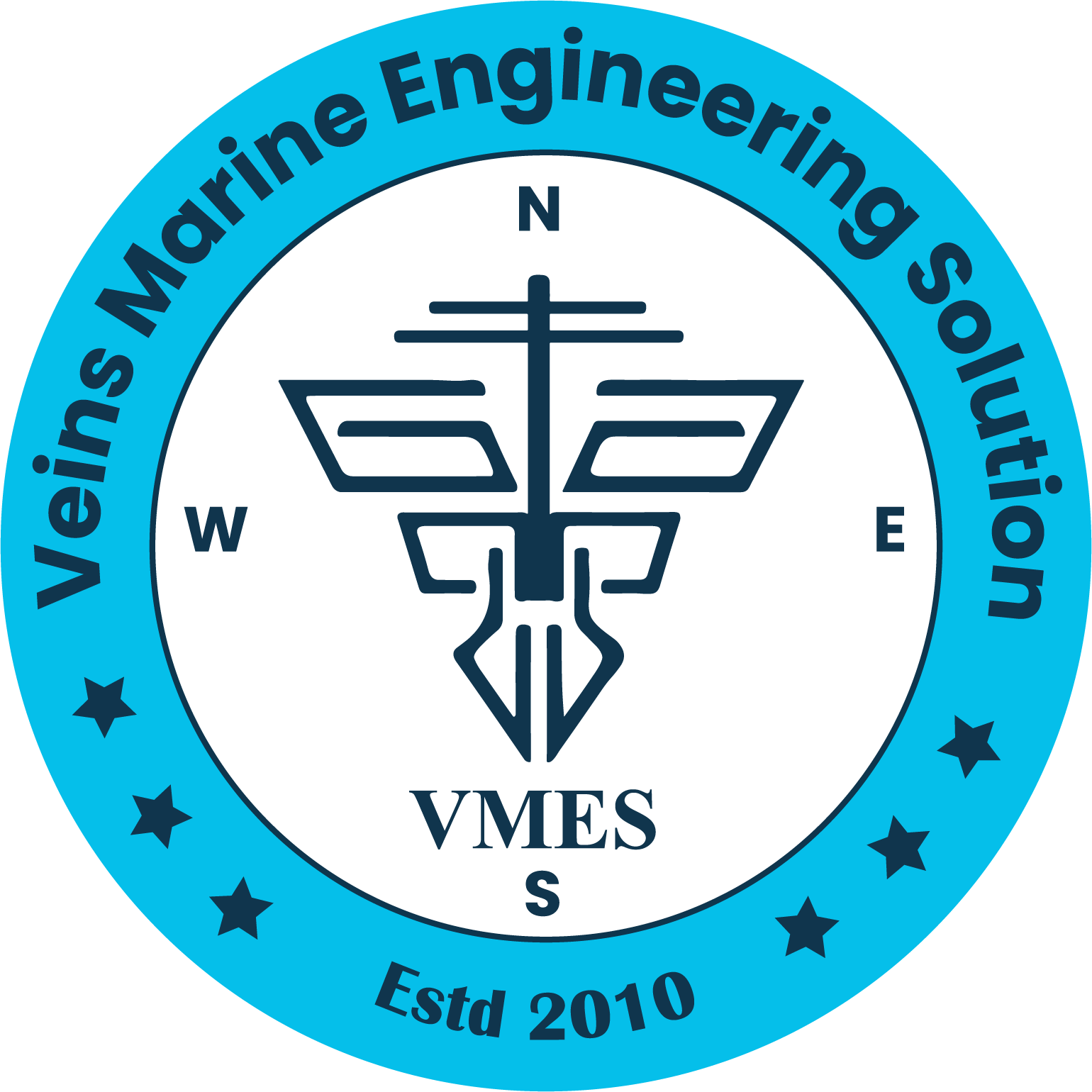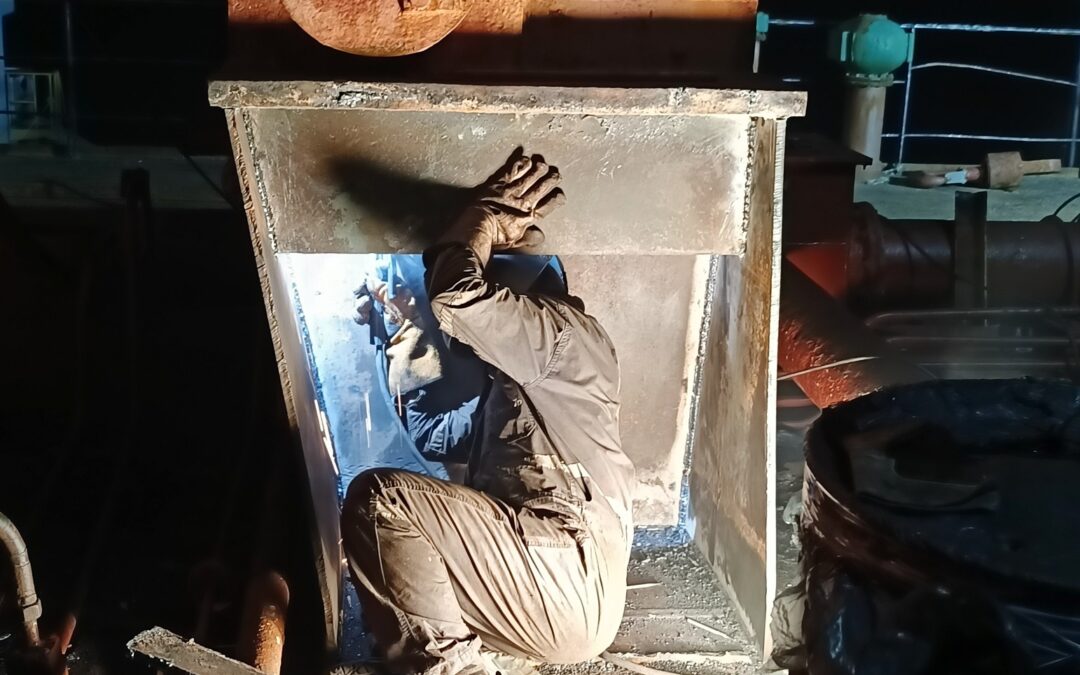The cargo hold hatch cover system is one of the most critical components on a vessel. It ensures cargo protection, watertight integrity, and smooth loading/unloading operations. Any malfunction or failure, particularly in the cylinder ram, can disrupt operations, cause significant downtime, and even compromise vessel safety.
Recently, Veins Marine Engineering Solution (VMES) successfully handled a complex project involving a deformed cargo hold hatch cover cylinder ram and base, providing a complete repair and replacement solution that restored full operational efficiency.
This case study explores the technical process, challenges, and engineering solutions applied during this project.
Understanding the Issue
During routine operations, the vessel experienced mechanical failure in the cargo hold hatch cover cylinder ram. Observations included:
Severe deformation of the cylinder ram
Damage to the ram base area, causing misalignment
Potential risk of hydraulic leakage and operational failure
Common Causes of Cylinder Ram Failure:
Excessive operational load – Heavy hatch covers under cargo load exert tremendous pressure on the hydraulic system.
Hydraulic overpressure – Malfunctioning pumps or valves can generate pressures beyond design limits.
Metal fatigue and wear – Continuous operation over years weakens the ram and base.
Misalignment or improper installation – Even small deviations can cause uneven stress and deformation.
If such issues are left unaddressed, the hatch cover system may fail completely, leading to cargo exposure, water ingress, and operational delays.
Inspection & Damage Assessment
At VMES, every repair begins with a comprehensive inspection and assessment:
Visual Inspection: Identified surface deformation, cracks, and wear on the ram and base.
Dimensional Check: Precision measurements to quantify deformation and alignment issues.
Hydraulic System Analysis: Checked for pressure leaks, cylinder functionality, and overall system integrity.
The assessment determined that both the cylinder ram and its base required intervention to restore full functionality.
Step 1: Precision Base Repair
The base of the cylinder ram supports hydraulic load and ensures linear movement of the hatch cover. Deformation compromises both safety and operational efficiency.
Repair Process:
Machining & Grinding: Surface irregularities were corrected, and proper flatness was restored.
Welding & Reinforcement: Structural cracks were welded using marine-grade materials to withstand heavy hydraulic loads.
Alignment Correction: Precision instruments ensured the base was perfectly aligned for new cylinder installation.
Stress Testing: Simulated load tests verified the repaired base could handle operational stresses.
Result: A fully restored base, capable of supporting the new cylinder ram with precise hydraulic motion.
Step 2: Cylinder Ram Replacement
The deformed cylinder ram was removed carefully to avoid damage to surrounding components. The replacement process involved:
Selection of High-Quality Cylinder Ram: Engineered to meet vessel specifications and hydraulic pressure requirements.
Installation & Alignment: Ensured exact positioning to maintain smooth hatch cover movement.
Hydraulic Connection & Calibration: Connected to the hydraulic system, and tested for pressure, stroke, and leakage.
The new cylinder ram provided reliable operation, improved efficiency, and long-term durability.
Step 3: Testing & Commissioning
Post-repair testing is crucial to confirm operational integrity and safety:
Full Stroke Testing: Checked smooth extension and retraction under operational load.
Hydraulic Leak Test: Ensured zero leakage from cylinder seals, hoses, and valves.
Load Simulation: Verified system performance under expected cargo hatch load.
Final Alignment Check: Confirmed hatch cover movement is parallel and uniform.
After successful testing, the vessel’s cargo hatch cover system was fully restored to operational condition, minimizing downtime and ensuring cargo safety.
Importance of Professional Intervention
Cylinder ram failures can escalate quickly if handled by untrained personnel. VMES emphasizes:
Technical Expertise: Experienced marine engineers understand hydraulic systems and structural mechanics.
Precision Engineering: Accurate measurements, machining, and welding techniques.
Safety Compliance: Adherence to marine safety standards and classification society requirements.
Minimized Downtime: Efficient planning and execution reduce operational disruption.
Conclusion
At Veins Marine Engineering Solution (VMES), we deliver end-to-end marine engineering and ship repair solutions, including:
Cargo hold hatch cover maintenance and cylinder ram repair
Hydraulic system restoration
Deck machinery repair and replacement
Complete ship repair and vessel maintenance in Bangladesh
By combining technical knowledge, precision engineering, and quality assurance, VMES ensures vessels remain safe, seaworthy, and operationally efficient.
⚓ VMES – Your Trusted Partner for Comprehensive Marine Engineering Solutions
